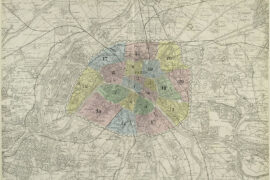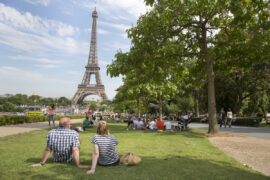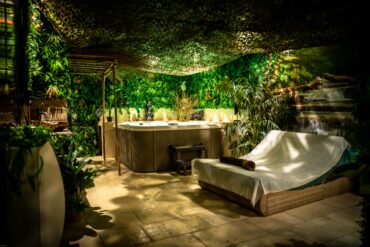The original palace was called the Cardinal Palace. The crafty Richelieu oversaw its construction in 1628 right next to The Louvre, under the eyes of the king. Louis XIII inherited these buildings with their vast garden. The ‘Palais-Royal’ name came into effect after the installation of the young Louis XIV and his mother (Anne of Austria) in 1643. When the palace and current monarchy subsequently fell, Monsieur d’Orleans (the brother of Louis XIV) inherited it.
In the 18th Century, the regent Phillipe II of Orléans, who was ruling France during the childhood of Louis XV, received mistresses and courting ladies there for his Libertine parties. On the eve of the revolution, his great-grandson Phillipe Egalité, who was heavily in debt, came up with a clever way of refilling his coffers – he surrounded the gardens with arcade buildings, and he rented out the ground floors to shop owners. Very quickly, the Palais-Royal became a place where people could express themselves freely. It was from this place that Camille Desmoulins called upon fellow Parisians to launch the rebellion of 12th September 1789. It was confiscated during the revolution, and it was returned to the Orléans family, before it was occupied by Napoléon III. It was then damaged by fire and restored in two stages, before the Palais-Royal was definitively returned to the state in 1871. The Third Republic installed the ‘Conseil d’Etat’ inside at this point.
Since then, the palace has only experienced one turbulent event – the installation of columns by Daniel Buren in the ‘Cour d’Honneur’ in 1986. This provoked much controversy.
Image source : http://youpygald.canalblog.com/archives/2012/09/19/25140457.html
Location of the attractions
in the 1st arrondissement of Paris
| Title | Category | Address | Description | Link |
|---|




